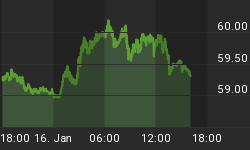The Emperor may have had a point after all. Tangible clothes are not necessarily all they’re cracked up to be. Everything else is virtual these days, so why not … what we wear? In fact, an award-winning idea that popped up earlier this month at the Cannes Lions Festival reminds us of a potentially lucrative field of fashion that revives the tale of the Emperor’s New Clothes.
Welcome to Earth, 2019.
The world is in the process of becoming entirely virtual. It’s a rather all-encompassing alteration.
Social life is virtual. Friendship, too, in many ways. Entire lives are being lived out on Instagram or in video games. You can even take a virtual vacation from your couch, or just a walk in the walk in the woods.
It’s Avatar, in the virtual flesh.
But to Norwegian fashion brand Carlings, virtual clothing is much more.
Carlings released its digital clothing collection late last year, but last month, it was one of the Grand Prix winners at the Cannes Lions 2019 festival in France.

(Click to enlarge)
Source: Carlings Digital Collection
At Cannes, Carling’s offer of a high-tech way to realistically dress yourself for your virtual life--without getting out of your pajamas--was well-received.
In fact, it was the Digital Craft winner of the festival’s Grand Prix award for its “Address the Future--Virtue Copenhagen” collection.
According to Carlings, we live in a “paradox”. We can’t be seen “in the same outfit twice” in social media, but we also need to do something about waste.
It’s a series of digital fashion items that you only wear in virtual space, which is the space that is most frequently inhabited these days.
So how does it work?
First, you take a picture of yourself, and then you choose items of virtual clothing from Carlings digital shop. Then, a 3D tailor suits you up to perfection.
“This is our new way to express our fashion creativity without leaving a negative footprint on the world,” says Carlings.
Related: China Prepares New Cybersecurity Law
And they’re setting out to challenge the fashion industry’s problem-solving when it comes to finding more sustainable solutions.
So, it might be about virtual vanity, yes, but it’s also about reducing waste and helping to ward off climate change.
In other words, Carlings thinks it’s found a way to be vain and kind to Mother Nature at the same time. Carlings says all profits will go to WaterAid.
Global warming has inspired many brands to make changes, from manufacturing to shipping, as well as with the use of green energy.
Each year, the apparel industry sends and estimated 21 billion tons of waste to landfills.
According to a 2018 report by the United Nations Economic Commission for Europe, fashion companies produce 20% of global water waste and 10% of carbon emissions.
It seems that virtual clothing might make business sense, as well.
Vogue Business calls it the “next fashion frontier”.
It’s based on the fairly realistic premise that social media-obsessed Millennials and Gen-Zers would actually forego buying clothing in order to spend instead on a digital outfit.
It’s lost on no one that many fashion items are presented by models and social media influencers who wear them for a few minutes and then toss them. Digitally designing these clothes would create an environmentally friendly solution to this epic waste.
To determine whether virtual clothes might make solid business sense, look no further than Fortnite the video game that has spread around the world faster than the plague, with both kids and adults spending fortunes on virtual costumes for the game.
Fortnite earned $2.4 billion in revenue last year--more than any other game.
And as Polygon notes, “as Fortnite has shifted into a hangout spot, the messiness of social hierarchies has followed. … players earn prestige with other fans based on their character’s look.”
The line between games and social media is fast fading, and fashion is already more than just testing its feet in the waters of digital consumerism.
The “Kim Kardashian: Hollywood” video game has generated more than $240 million in sales since its launch in 2014, and Glu Mobile’s Covet Fashion game, which lets players style models with digital designer clothing and accessories, raked in $53.4 million in sales in 2018.
If you spend any amount of time in a virtual world, virtual clothing will become must.
In this case, the Emperor is still vain, but at least he’s got an environmental conscience.
By Istria Alic for SafeHaven.com

















